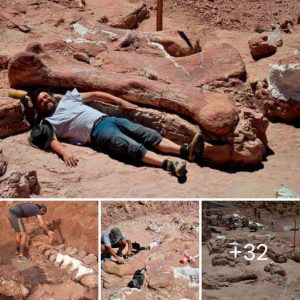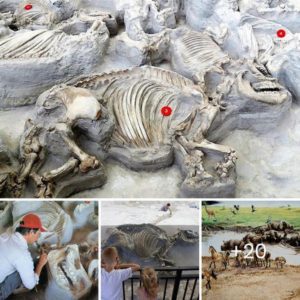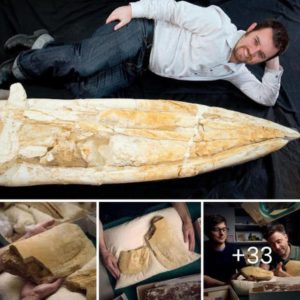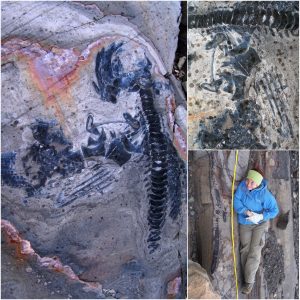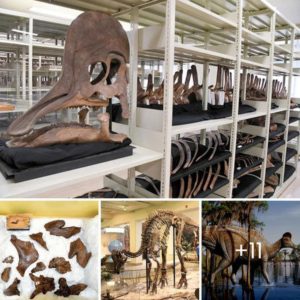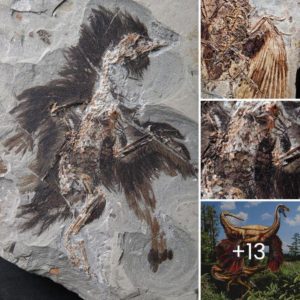King Tutankhamun was a hobbled, weak teenager with a cleft palate and club foot. And he probably has his parents to blame. The mother and father of the legendary boy pharaoh were actually brother and sister. The startling discovery was revealed today by a team led by Egyptian antiquities expert Dr Zahi Hawass. They identified the mummies of both his parents and both of his grandparents by studying DNA samples over two years.
For a long time, there were strong suspicions that he was murdered because he had a hole in the back of his head. But this is now believed to be due to the mummification process and scientists think the new research points to him dying from complications from a broken leg exacerbated by malaria.
The revelations are in stark contrast to the popular image of a graceful boy-king as portrayed by the dazzling funerary artefacts in his tomb that later introduced much of the world to the glory of ancient Egypt.

Meet the family: Scientists have for the first time – with the help of DNA – been able to identify these skulls as belonging to King Tut’s father Akhenaten (left) and mother (right). They were also brother and sister
King Tut has fascinated the world ever since his ancient tomb was unearthed by the British archaeologist Dr Howard Carter in the Valley of the Kings in 1922. The treasure in his tomb included a 24.2lb solid gold death mask encrusted with lapis lazuli and semi-precious stones. Rumours of a curse arose after Dr Carter’s benefactor Lord Carnarvon died suddenly a few months after the tomb was opened, even though Dr Carter went on to live another 16 years.
King Tut was known to be the son of the ‘heretic’ pharaoh Akhenaten, who tried to reform the Egyptian religion during his rule. But the identity of his mother had been shrouded in mystery – until now. The fact that his mother and father were brother and sister may seem bizarre today but incest was rife among the boy king’s family because pharaohs were believed to be descended from the gods.
Therefore it was an acceptable way of retaining the sacred bloodline. King Tut’s own wife Ankhesenpaaten, was his half-sister as they shared the same father. They were married when he was just ten. But Dr Hawass’ team found generations of inbreeding took their toll on King Tut – the last of his great dynasty.
The bone disease he suffered runs in families and is more likely to be passed down if two first-degree relatives marry and have children, the study published today in the Journal of the American Medical Association shows.
They described him as: ‘A young but frail king who needed canes to walk.’
This explains the presence of more than 100 canes in his tomb, which he would have needed in the afterlife. A sudden leg fracture possibly introduced by a fall might have resulted in a life-threatening condition when a malaria infection occurred,’ the JAMA article said.
Tut, who became pharaoh at the age of ten in 1333 BC, ruled for just nine years until his death. He was the last of the royal line from the eighteenth dynasty of the New Kingdom. The cause of King Tut’s death has long been disputed among historians, with many speculating that he was murdered.
Theories that he was assassinated stemmed from the fact that he was the last ruler of his dynasty and had a hole in the back of his head. However, in 2005 Dr Hawass announced his team had found no evidence for a blow to the back of the head, and the hole was from the mummification process. King Tut was succeeded by the high priest Ay for four years – who also married his widow Ankhesenpamon.
King Tut’s grandmother Queen Tiye, the mother of Pharaoh Akhenaten. The hairpiece behind her is believed to have been made up of her own hair. It has not disintegrated because of the mummification process and the dry conditions within the tomb
Ay was followed by the military leader Horemheb who ruled for 26 years until he ceded power to Ramses, founder of the 19th dynasty. The researchers studied 16 mummies from the Valley of the Kings. They revealed that beneath the golden splendour in which they lived, ancient Egypt’s royals were as vulnerable as the lowliest peasant to disease.
Three other mummies besides tuts showed repeated malaria infections and incestuous marriages only worsened their maladies. However, analysis of King Tut’s family disproved speculation his family suffered from rare disorders that gave them feminine attributes and misshapen bones, including Marfan syndrome, a connective tissue disorder that can result in elongated limbs.
The theories arose from the artistic style and statues of the period, which showed the royal men with prominent breasts, elongated heads and flared hips.
‘It is unlikely that either Tutankhamun or Akhenaten actually displayed a significantly bizarre or feminine physique,’ the team said. One of the most impressive-looking mummies who was studied was King Tut’s grandmother, Queen Tiye.
She was the chief wife of Amenhotep III and mother of King Tut’s father Akhenaten. She was the first queen to figure so prominently beside her husband in statues and temple reliefs. Queen Tiye held much political influence at court and acted as an adviser to her son after the death of her husband. There has been speculation that her eldest son Prince Tuthmose was in fact Moses who led the Israelites into the Promised Land.

After 3,000 years and DNA analysis, scientists have proved that from foreground to background, these mummies are of King Tut’s mother, grandmother, and his father, Akhenaten

Technicians take DNA samples from the mummy of Boy Pharaoh Tutankhamun in the Valley of the Kings. Tests revealed his parents were siblings
A lock of her hair was found in a miniature coffin in King Tut’s tomb. Her tomb was identified by matching the labelled hair in Tut’s tomb with the well-preserved hair on her mummy. The ancient Egyptians were very concerned with maintaining their hair to promote their social status. They devised remedies for baldness and greying and regularly washed and scented their hair. Adults sometimes wore hairpieces and had elaborate styles.
The hairpiece found by Queen Tiye is believed to have been made up of her own hair. It has not disintegrated because of the mummification process and the dry conditions within the tomb. Hair does not continue to grow after death, instead, the skin retracts around the follicles as it dries, making the hair jut out more prominently.
King Tutankhamun has long been big business.
A 1970s Tut exhibit drew millions of visitors to U.S. museums, and a popular revival including artefacts from his tomb and others’ has been travelling around the United States for the past several years and is currently at San Francisco’s DeYoung Museum. Egypt’s economy depends a great deal on tourism, which brings in around $10billion a year in revenue. The King Tut exhibit at Cairo’s Egyptian Museum is one of the crown jewels of the country’s ancient past and features a stunning array of treasures including Tut’s most iconic relic – the golden funeral mask.
Another tourist destination is Tut’s tomb tucked in the Valley of the Kings amid Luxor’s desert hills. In 1922, British archaeologist Howard Carter discovered it and the trove of fabulous gold and precious stones inside, propelling the once-forgotten pharaoh into global stardom. Hundreds of tourists come daily to the tomb to see Tut’s mummy, which has been on display there since 2007.
Though historically Tut was a minor king, the grander image ‘is embedded in our psyche’ and the new revelations won’t change that, said James Phillips, a curator at Chicago’s Field Museum of Natural History.
‘Reality is reality, but it’s not going to change his place in the folk heroism of popular culture,’ Phillips said. ‘The way he was found, what was found in his grave – even though he was a minor king, it has excited the imagination of people since 1922.’
Dr Zahi Hawass removed King Tut from his stone sarcophagus in 2007 to study his DNA. Tests revealed the king was a sickly young adult.

